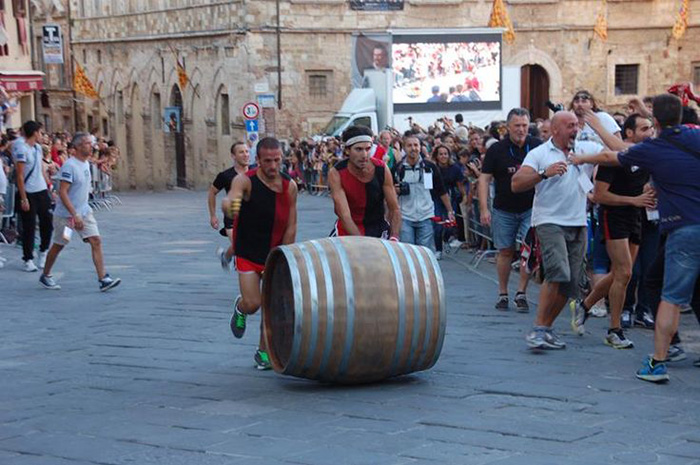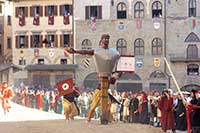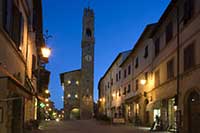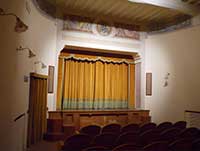 |
||||
Il Bravio delle botti[1] |
||||
Events in Montepulciano Il Bruscello and Il Bravio delle botti |
Il Bruscello |
Montepulciano is the unique town which keeps and represents Tuscan folk traditions by "Bruscello": the magic of recollection transforms places and creatures. Etymologically, "Bruscello" is likely to mean "arboscello", as to say tree with leafty branches, planted by the actor who begins his performance. Bruscellantis' companies form in carnival time. They have a leader. They stop in squares, threshing-floors and church-squares. They tell sad stories, scenes of passion, romantic stories of chivalry. Il Bravio delle botti |
| In 1372 provisions of "Bravium or Palium" were issued. It was a scarlet drape which was given as a prize to the winner of a horse race. The race took place each year on August 29yh in honour of the patron saint, St. John Decollato. Today the competition has been turn into a race along the main town streets, but no loger with horses but with 80-kilo casks. They are rolled by "spingitori" (men who push them) representing the 8 quarters (Cagnano, Collazzi, Le Coste, Gracciano, Poggiolo, San Donato, Talosa and Voltaia). Before the race there is historical procession with more than 200 people wearing XIV-Century costumes. Each quarter is represented by drummers, flag-wavers, ensigns, ladies, knights, capitain, soldiers and a magistrate. |
| During the months of July and August Montepulciano hosts the Cantiere Internazionale d’Arte. This is an artistic event created by the German composer Hans Werner Henze. |
|
||||
Gioco del Cacio al Fuson the cheese rolling competition in Pienza. |
Arezzo, Giostra del Saracino |
Montalcino, Notte Bianca, Piazza del Popolo e Palazzo dei Priori
|
||
Montisi, Teatro della Grancia
|
Calici di Stelle, 10 agosto |
Torre del Lago | The Puccini Festival |
||
[1] Source: www.montepulciano.org/ |
||||








